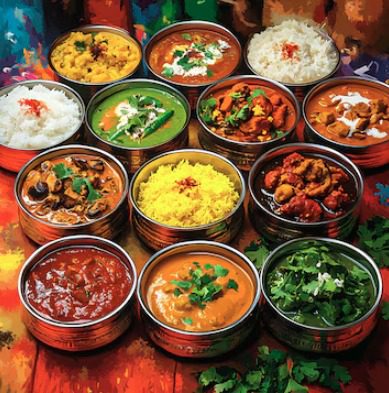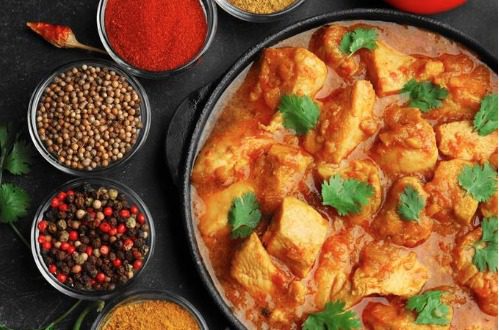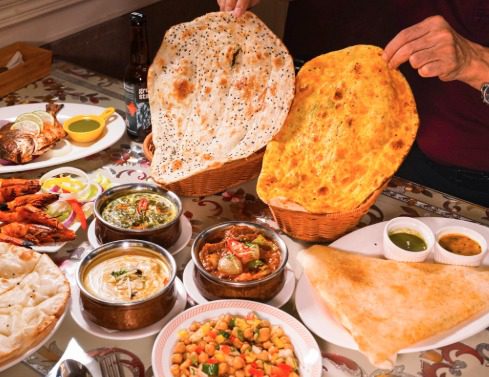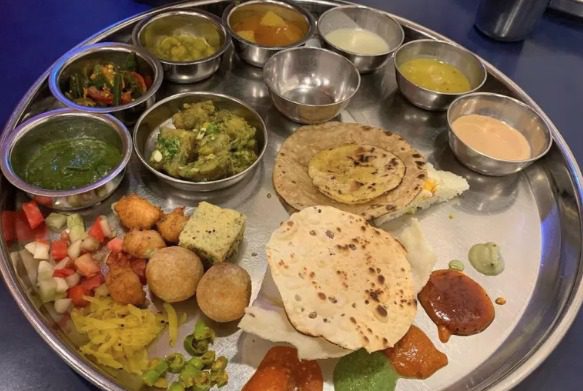Indian curry, the gastronomic soul of the subcontinent, represents a singular chapter in global cuisine through its intricate flavor architecture and profound cultural legacy. This spice driven culinary tradition mirrors India’s diverse geography and historical layers while continuously evolving within contemporary food globalization. From the cream laden curries of the north to the coconut fired heat of the south, from regal Mughlai delicacies to bold street-food renditions, Indian curry dazzles with its regional diversity and technical sophistication.


Northern India’s curries showcase dairy-rich profiles rooted in pastoral traditions. Punjab’s Butter Chicken features tandoori-roasted yogurt-marinated poultry simmered in tomato-based gravy enriched with cream and crushed nuts, finished with dried fenugreek leaves (kasuri methi). Delhi’s Nihari a slow-cooked lamb shank stew releasing marrow collagen over eight hours with cardamom and cinnamon warmth epitizes Mughal court cuisine. Kashmir’s Rogan Josh delivers visual drama with crimson chili and turmeric, while poppy seed paste imparts a distinctive nutty depth.
Southern India pursues a radically different philosophy. Kerala’s Meen Curry balances fiery notes with fresh coconut milk and tart kokum fruit, steamed in banana leaves for vegetal aroma. Tamil Nadu’s Chettinad Curry employs up to 24 freshly ground spices, where black pepper and mustard seeds crackled in oil create pungent layers. Hyderabad’s Dum Biryani masters layered cooking basmati rice absorbs saffron infused lamb fat in sealed pots, marrying Islamic techniques with indigenous flavors.
Eastern India reflects Bengali influences. Dhaka’s Muri Ghonto transforms fish heads and rice into a mustard-oil-kissed porridge, showcasing Ganges Delta ingenuity. West Bengal’s Chhana Curry highlights homemade paneer in turmeric-cumin harmony, refining vegetarian traditions. Odisha’s fermented rice Pakhala Curry with curry leaves and green mango offers heat-beating acidity a testament to climate-adaptive cooking.
Western India straddles land and sea. Goa’s Pork Vindaloo, descended from Portuguese vinegar preservation, melds chili, garlic, and palm wine into fiery sour brilliance. Mumbai’s street style Samosa Chaat drowns fried pastry in chickpea-based curry, disguising twelve-spice complexity beneath humble presentation. Gujarat’s sweet-sour curries with jaggery and tamarind reveal Jain dietary ethos.


Spice Science elevates curry making to high art. Masala blends often household secrets follow precise alchemy. Garam masala (cinnamon, cardamom, clove) is added late to preserve volatile oils, while roasted lentil-based sambar powder grounds South Indian vegetarian stews. Freshness is paramount; Delhi’s legacy spice mills still stone-grind to prevent bitter compounds.
Modern reinventions are reshaping traditions. Molecular gastronomy reimagines butter chicken as foam with sous-vide poultry, while elite kitchens fuse ghee with French sauces like curry-infused hollandaise. Health-conscious twists include Kerala’s quinoa curry bowls and Delhi’s dairy-free “royal vegan” versions innovations honouring heritage while meeting contemporary tastes.
Beyond technique, Indian curry carries profound cultural DNA. Family recipes encode migration histories; festival feasts strengthen community bonds; and 200,000 global Indian restaurants attest to its adaptive genius. From street vendors’ copper pots to Michelin-starred kitchens, Indian curry sustains an eternal dialogue between spice and fire—an indispensable narrative in humankind’s culinary odyssey.

Be the first to comment